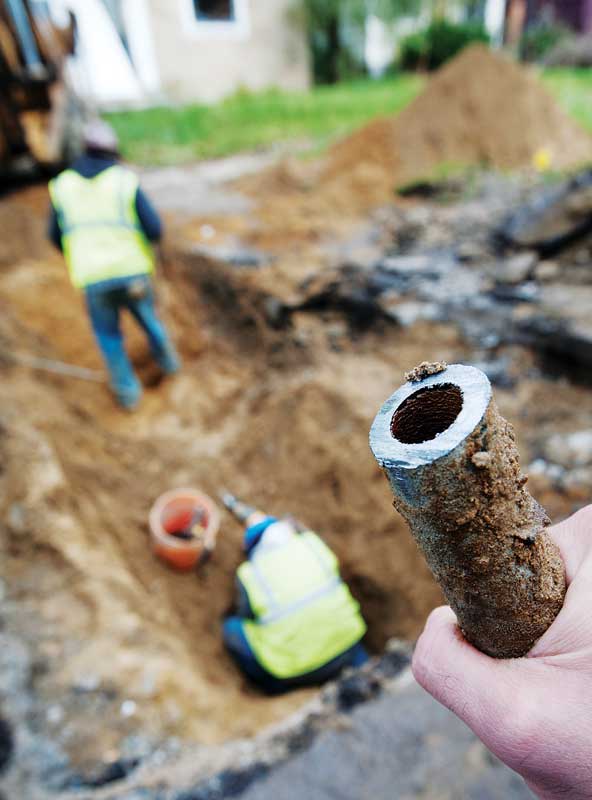
Installation best practices
Officials in Flint, Michigan, have already begun replacing all the city’s lead pipes with copper. Mayor Karen Weaver launched FAST Start in 2016 to get the lead out of Flint after a state-appointed emergency manager switched the city’s water source to the Flint River in 2014 without the necessary corrosion control chemicals being added. The corrosive water removed a protective coating on the inside of the pipes, causing lead to leach into the city’s drinking water.
While lead levels have been significantly reduced since the city switched back a year ago to water delivered from Lake Huron by the Great Lakes Water Authority, residents are still urged to drink only filtered water, and to replace their filters when needed. It is estimated as many as 29,100 homes have lead or galvanized steel service lines that need to be replaced—this project will cost an estimated $140 million.
Cities that have also begun to remove all lead pipes or laterals and replace them with copper include:
- Milwaukee, Wisconsin;
- Louisville, Kentucky;
- Lansing, Michigan;
- St. Paul, Minnesota; and
- Spokane, Washington.
In Wisconsin, the City of Madison initiated its own replacement programs using copper 15 years ago. The state capital replaced more than 8000 of its lead lines with copper from 2001 to 2011, after discovering lead levels over the federal limit. Instead of making minor changes and pushing a potential problem to future generations, city officials took action.
North of the border, Canadian cities have also been steadily working on replacing lead service lines with copper. In 2007, Montréal, Québec, announced the start of a multi-year program to replace approximately 75,000 lead service lines supplying water to residences of less than eight units built before 1970. Toronto, Ontario, is in the midst of a program to replace about 140,000 lead or galvanized steel services.
The common factor among these programs is a consistent, deliberate choice to replace lead with copper for long-term reliability of this hard-to-reach, hard-to-replace infrastructure—favoring life-cycle value over short-term cost. No matter how long it has been buried or in service, copper maintains its value, returning 80 to 90 percent or more of its original cost when it is reclaimed and sold for recycling. Its long life cycle, combined with its ease of recyclability back to the same metal purity (i.e. not downcycled to a lower purity or lesser use), makes it a sustainable piping material.




